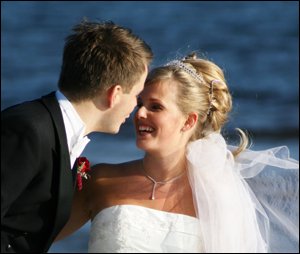 In this day and age the trend for weddings is moving away from very traditional and formal occasions to more relaxed, fun and personal celebrations. One only has to look at the recent press to realize that even for a Royal couple where a strict protocol was expected, the rule book is being rewritten.
In this day and age the trend for weddings is moving away from very traditional and formal occasions to more relaxed, fun and personal celebrations. One only has to look at the recent press to realize that even for a Royal couple where a strict protocol was expected, the rule book is being rewritten.
With less expectation to bide by tradition, many couples want their special day to be unique, reflecting their tastes, personalities and interests. However despite this trend it’s interesting that although there are several traditions that have fallen by the wayside and forgotten over time, there are still many wedding traditions that have stood the test of time, prevalent throughout the world and little changed from their origins hundreds of years ago.
No longer are weddings on a Saturday or during May considered bad luck, a veil is not worn to confuse evil spirits, and a cauliflower hanging on the door is not used to symbolize a rejection of a mans proposal, as was the case a few hundred years ago. Cars are not usually decorated with shoes or cans, it’s no longer the bride’s father responsibility to pick up the whole bill and the expectation to ask a bride’s father for permission is decreasing in popularity.
However even though it’s not uncommon for couples to live together before their wedding day very few would spend the night together before the wedding or see each other on the day before the ceremony. The majority of brides would still expect a groom to do the asking and would still expect the question to be popped on one knee. Flowers have traditional meanings that are often ignored in favor of matching to color schemes.
Something old, something new, something borrowed, something blue is still a consideration for many brides although the traditional last line “With a sixpence in her shoe” has been dropped. The something old represents the link between the bride and her family. Something new doesn’t apply to a new item of clothing but more the excitement of the day itself and future happiness for the couple. The something borrowed must be returned in order to ensure good luck and it supposed to come from a women who is already happily married. The tradition of something blue stems from a ribbon worn as a symbol of fertility in ancient Israel.
Before the Victorian era brides simple wore their best outfit rather than to buy a special dress for the day. It wasn’t until Queen Victoria shunned the usual royal silver for white that the color was popularized and thought to ward off evil spirits as well as be a sign of purity. It’s considered unlucky for the groom to see the wedding dress before the ceremony and bouquets are still thrown to unmarried female guests to bring luck to the catcher so they’ll be next in line to get married.
Wedding favors are supposed to be a symbol that guests can keep to remember the day and have been around for centuries. This has changed in recent times with sugared almonds increasing in popularity and sweet treats being given rather than lasting mementos. Although rings have always been traditional for the bride, with an unbroken circle representing eternity, it’s only relatively recently that the groom has exchanged rings also. The wearing of the wedding ring on the fourth finger of the left hand is thought to be so as there’s a vein that runs directly from the finger to the heart and therefore a symbol of love, although the Christian traditions differ in meaning.
In Roman times the marriage was not legally binding until the couple had shared bread, where’s eating in today’s weddings is just treated as a sign of celebration of a couples new life together. Cutting the cake together is still a popular tradition, although it was originally thought to create a special bond and to symbolize a shared future.
My personal favorite is where the groom used to carry the bride over the threshold, to prevent the wife from falling over or stepping into the house with her left foot – both of which are considered to be unlucky. This tradition is decreasing in popularity as many people live together before getting married but despite my husband-to-be protests it will be something I insist on. Yet another reason to start the wedding diet then!
About the author: When Jennifer is not busy planning her own wedding in St. Lucia she works on behalf of a company that specializes in weddings abroad.
Credits: Photo courtesy of Rob Darby.